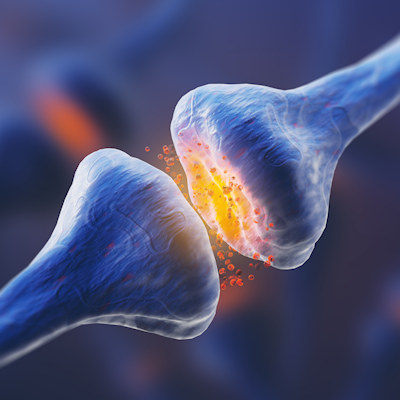August 31, 2022 -- A gene that carries a strong risk for Alzheimer’s disease drives changes in the brain’s blood vessels that lead to problems in synapses and ultimately cognitive dysfunction, according to a study in mice.
The gene, apolipoprotein E4 (APOE4), is the main susceptibility gene for Alzheimer's and previous studies have shown that it disrupts the barrier that stops toxic substances from entering the brain. However, the field lacked details on a molecular level of how APOE4 affects the blood-brain barrier and synaptic function.
In their study, published August 30 in the Journal of Experimental Medicine, researchers from the Keck School of Medicine of the University of Southern California describe how they sought to fill the knowledge gap using a multiomics approach. The work revealed that when mice with the APOE4 gene initially suffer damage to endothelial cells and pericytes, both of which are part of the blood-brain barrier, synaptic function is maintained.
The lag between damage to the blood-brain barrier and the disruption of synaptic function points to a potential way to intervene in the progression of Alzheimer's before the emergence of behavioral deficits and cognitive dysfunction, as Dr. Berislav Zlokovic, PhD, the lead author of the paper and director of Keck's Zilkha Neurogenetic Institute, explained in a statement.
"Understanding the order of events -- what's happening first, what's happening next -- is very valuable, because it had not yet been shown how changes in the blood-brain barrier relate to synaptic dysfunction at this molecular level," Zlokovic said.
Zlokovic and his team are now studying ways to protect the blood-brain barrier, including a genetically engineered variant of activated protein C that is in phase III clinical trials for the treatment of stroke and a molecule that targets a dysfunctional gene that controls functions inside endothelial cells. In theory, the molecules could keep the blood-brain barrier healthier for longer and delay the onset of Alzheimer's.
The evidence that the blood-brain barrier deteriorates before synaptic function is disrupted comes from analyses of mice with either APOE4 or APOE3, a gene that confers a lower risk of Alzheimer's. Zlokovic and his team performed single-nucleus RNA-sequencing and phosphoproteome and proteome analysis to link APOE4 to an early disruption of the blood-brain barrier transcriptome in 2- to 3-month-old mice. The signaling changes happened in parallel to the breakdown of the barrier and loss of pericytes.
Changes in the blood-brain barrier preceded postsynaptic interactome disruption and behavioral deficits that developed two to five months later. The timeline suggests there is a short window in which drugs that target the blood-brain barrier may be effective in carriers of the APOE4 gene.
Copyright © 2022 scienceboard.net








